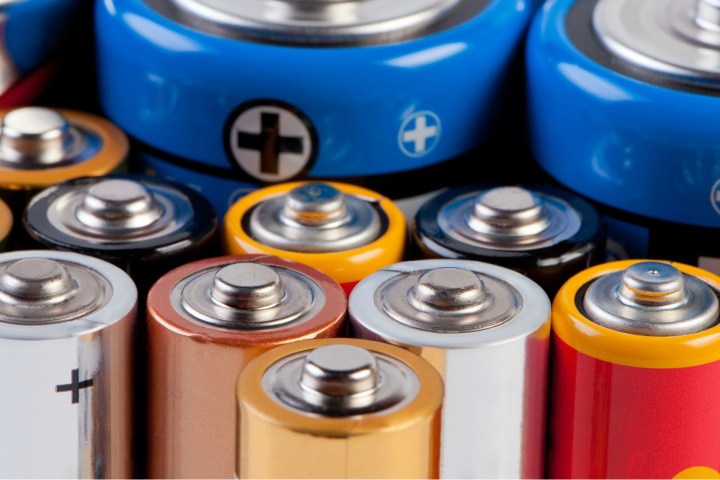If you’re planning on doing any kind of spring cleaning this year, odds are pretty good that you’ll stumble upon a box full of old, dead batteries that you’ve been meaning to take care of responsibly. Maybe you haven’t been quite sure where or how to drop them off, or maybe you just haven’t had the time to get around to it. Either way, the process is pretty straightforward, and we’re going to run you through it.
Why do batteries die?
It’s helpful to start by looking at how batteries work. When a battery is charged, it pulls electrons to one side of the battery. A barrier prevents those electrons from easily getting to the other side, despite the attraction. However, completing a circuit (i.e., connecting the battery to a device you want powered) provides a path through which those electrons can flow. That current is electricity. When the battery is charged again, it pulls those electrons through the barrier separating the two halves of the battery.
This entire system hinges on having a stable medium that electrons can be stored in. Many of our devices use lithium as that medium on the positively charged anode side. Graphite (and sometimes graphene) is used on the negatively charged cathode end. These mediums start to degrade as electrons are pulled out of and pushed into each side every cycle. Even the separator can lose its efficiency. The end result is a gradually decreasing ability for these batteries to hold a charge as the mediums for holding electrons become more and more irregular.
What leaks out of batteries?
If you’ve been hoarding your dead batteries for awhile, you might have seen some residue leaking from them. When the chemical components of a battery degrade, they create gas. This adds pressure inside a battery, making them sometimes look like a spicy pillow. Once the seal on the battery is broken, that pressure can sometimes force some the battery’s liquid electrolyte to escape. It doesn’t take long for that electrolyte to react with the air and turn into a salt. That salt is chemically stable, but like the liquid electrolyte, is an irritant. If you see that powdery residue, make sure to use gloves while handling it.
Are dead batteries dangerous?
Yes, dead batteries can be dangerous. A battery’s whole job is to store potential energy. If their means of containment is compromised, they can release all that chemical energy at once in a totally uncontrolled way, better known as an explosion. Even before getting to that point, the chemicals inside of a battery are rather caustic, potentially damaging whatever’s around them when they leak. In order to minimize danger, you’ll want to dispose of your dead batteries sooner than later. When storing them, put tape over contacts of each battery to prevent an accidental circuit from forming.

What kind of batteries are recyclable?
Most batteries can be recycled, but with varying levels of efficiency. Lithium-ion batteries are hard to recycle as their technology is evolving rapidly. As a result, the materials available to extract can vary, as can their value. On top of the engineering challenges this poses, it also makes it hard for recycling facilities to justify economically. Our recycling capabilities need to ramp up quickly to meet the rising tide of dying lithium-ion batteries despite these hurdles.
Other battery types have well-established track records for recycling, however. The big lead acid batteries you’ll see in cars and solar storage are over 90% recyclable.
How are batteries recycled?
Batteries are typically recycled in the same way most electronics are: They’re shredded, sorted, treated in solvents, then smelted. This process, particularly the smelting part, can have its own significant environmental impact.
How should I prepare my batteries for recycling?
To start, it’s good to tape over the contacts of your batteries to prevent any accidental circuits. The next most important thing is sorting. Make sure your lithium ion batteries are separate from your alkaline and other types of batteries. Once that’s done, you’ll want to double-check with your drop-off point to see which of those types they accept. Making sure they’re clearly labeled can ensure they’ll be properly processed.
How to responsibly recycle old and unused batteries in your state
Finding specific drop-off points varies by location. We’re going to break down some of the best drop-off locations in several states across the U.S. The easiest way to find a battery recycling drop-off point is using a locator like Call2Recycle. They also offer a mail-in option, which can be handy if you’re a long ways from a drop-off.
How to responsibly recycle old and unused batteries in California
These are some of the top-rated battery recycling locations in California.
- Batteries Plus Bulbs
- Modesto Battery
- California Batteries
- Interstate Batteries
- Ranch Town Metal Recycling Center
How to responsibly recycle old and unused batteries in Texas
If you’re looking to recycle batteries in Texas, these are the best places to go.
- Batteries Plus Bulbs
- Interstate Batteries
- Golden Eagle Battery
- South Post Oak Recycling Center
- All American Recycling
How to responsibly recycle old and unused batteries in Florida
For those in Florida, these are the perfect battery drop-offs.
- Batteries Plus Bulbs
- Interstate Batteries
- Delray Scrap Recycling
- Fedca Scrap Recycling
- Eagle Metals Recycling
How to responsibly recycle old and unused batteries in New York
There are loads of battery recycling options in New York, but these are some of the best.



